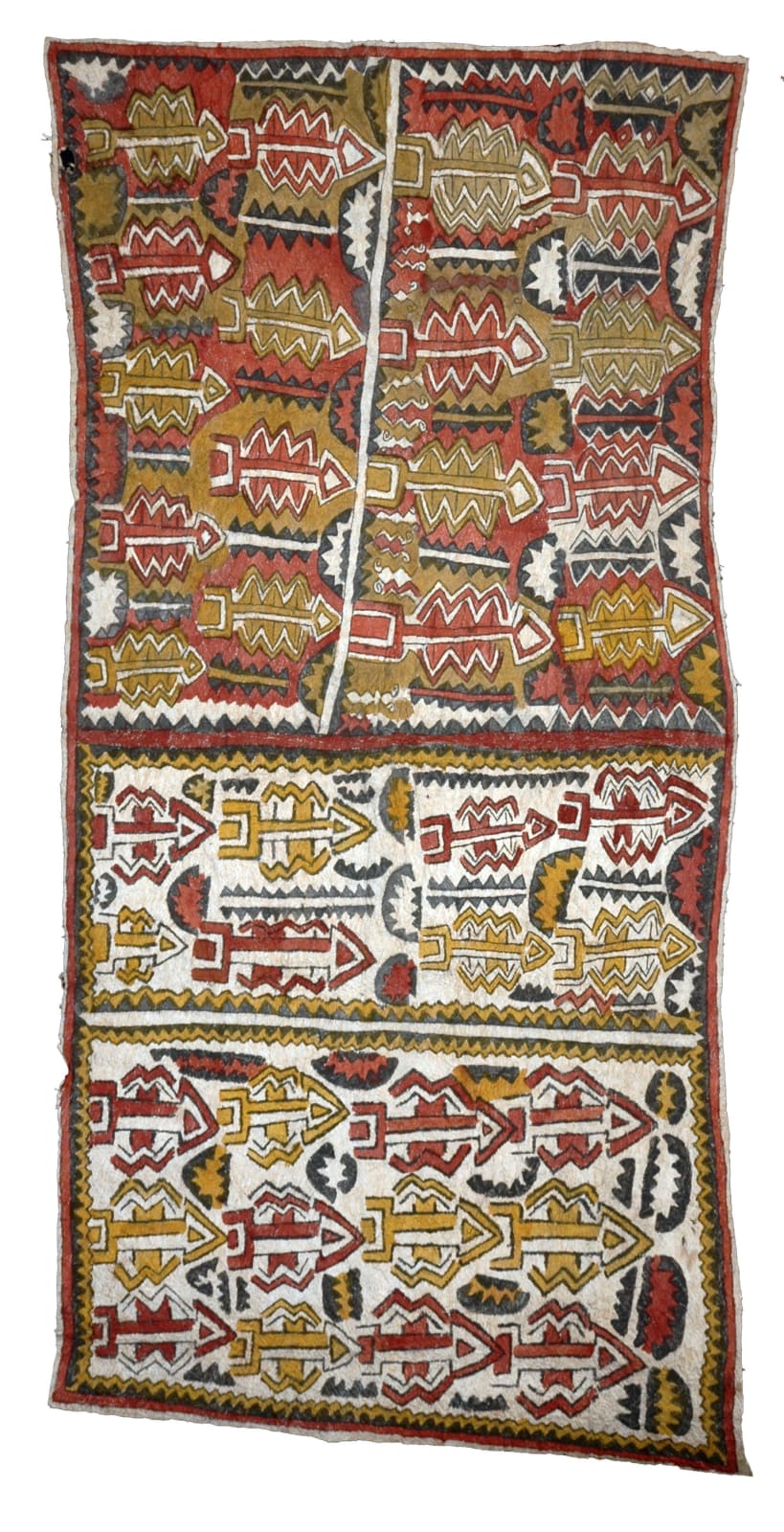Ivy-Rose Sirimi Papa New Guinea, Omie, b. 1974
mairi'e jeje ijo 'oho, dahoru'e, buboriano'e - The Forbidden Tree of Lawe's Parotia, omie mountains and beaks of Blyth's Hornbill
natural pigments on nioge (barkcloth)
153 x 77 cm
787376
The main design of this work is mairi'e jeje ijo'oho (the forbidden tree of the Lawe's Parotia). Lawe's Parotia (Parotia Iawessi) is an extraordinary bird and is part of the...
The main design of this work is mairi'e jeje ijo'oho (the forbidden tree of the Lawe's Parotia). Lawe's Parotia (Parotia Iawessi) is an extraordinary bird and is part of the bird-of-paradise family. It is black in colour and has six wires extending from it's head and a golden crest on it's chest. Males perform spectacular courtship dances for females in arenas, which are created and tended by the male. In Omie territory, the bird is found only on the highest ridges of the mountains and it is held sacred by Omie people. The trees it lives in are also sacred, as is it's nest. If a tree is cut or burnt, it's nest disturbed, or if the Lawe's Parotia is hunted or it's feather's burnt then when the person returns to the village after causing the harm to the sacred bird all of the pigs in the village will have died. This design was taught to Ivy-Rose by her mother, the late Chief of Inraje clan woman Filma Rumono. The continuity of this design plays an important part of upholding the traditional Omie law that protects Lawe's Parotia. The black sawtooth design that can be seen in the work are dahoru'e (Omie mountains). The zig-zagging lines that form a border directly above the sawtooth designs is buboriano'e (the beaks of Blyth's Hornbill) which has been infilled with yellow pigment. The buboriano'e design can be found woven around the edges of burejihano'e (traditional Omie mats) which are given in part of the brideprice by the groom's family to the parents of the bride.
